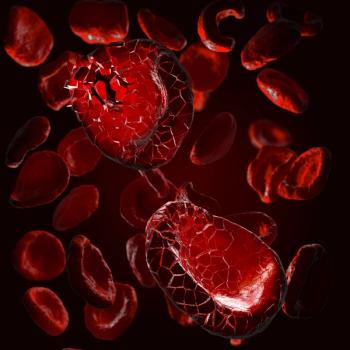
- ONCOLOGY Vol 13 No 3
- Volume 13
- Issue 3
A Randomized Trial of Fludarabine, Mitoxantrone (FM) Versus Doxorubicin, Cyclophosphamide, Vindesine, Prednisone (CHEP) as First Line Treatment in Patients With Advanced Low-Grade Non-Hodgkin's Lymphoma: A Multicenter Study by GOELAMS Group
The combination of fludarabine and mitoxantrone (FM) has been shown to be an effective regimen for indolent lymphoma (J
The combination of fludarabine and mitoxantrone (FM) has been shown to be an effective regimen for indolent lymphoma (J Clin Oncol 12:575, 1994). From December 1995, patients (age, 55 to 75 years) with newly diagnosed stage II bulky or stage III or IV low-grade NHL (mantle cell lymphoma excluded), and with at least one adverse prognostic parameter, were included in the GOELAMS 05.2 protocol.
After randomization, patients were allocated to a FM or CHEP arm. In the FM arm, patients received fludarabine (20 mg/m²/d intravenously [IV] on days 1-5) and mitoxantrone (10 mg/m² IV on day 1). In the CHEP arm, patients received doxorubicin 25 mg/m² IV on day 1), cyclophosphamide (750 mg/m² IV on day 1), vindesine (3 mg/m² IV on day 1 and on days 1-5), and prednisone (50 mg/m²/d orally). In both arms, patients were to undergo 6 monthly courses of treatment and then courses every other month for 6 months (ie, 9 courses for 1 year). Prophylaxis for Pneumocystis carinii pneumonia (PCP) and herpes zoster was mandated by protocol for patients receiving FM.
Response to treatment was defined according to three categories: complete response (CR), partial response (PR), and failure. Any response less than a PR was considered a treatment failure for this analysis.
From 100 patients registered, 75 were evaluable for response at 6 months and 55 for response at 1 year and for toxicity. At each end point, the two groups were balanced, especially with regard to age, sex, histologic feature (follicular or not), stage, B-symptoms, lactic dehydrogenase level (normal or not), and performance status.
At 6 months, CR, PR, and failure rates were, respectively: 42%, 48%, and 10% for the FM arm vs 9%, 54%, and 37% for the CHEP arm (P = .0008). At 1 year, CR, PR, and failure rates were, respectively: 55%, 30%, and 15% for the FM arm vs 11%, 39%, and 50% for the CHEP arm (P = .003).
Myelosuppression was the most frequent side effect observed in the two arms. The FM regimen was discontinued in two patients due to hemolysis and thrombocytopenia, and almost all of the patients on this arm experienced severe lymphopenia. Three local herpes zoster infections were observed, one in the CHEP arm and two in the FM arm. No PCP infection occurred. There were no toxicity-related deaths.
CONCLUSION: These results confirm the efficacy of FM for untreated patients with low-grade NHL. Prophylactic antibiotics may explain the rarity of opportunistic infections, especially PCP. The FM combination seems to be a promising new regimen for patients with indolent lymphoma.
Articles in this issue
almost 27 years ago
WHO Declares Lymphatic Mapping to Be the Standard of Care for Melanomaalmost 27 years ago
Navelbine Increased Elderly Lung Cancer Patients’ Survivalalmost 27 years ago
Consensus Statement on Prevention and Early Diagnosis of Lung CancerNewsletter
Stay up to date on recent advances in the multidisciplinary approach to cancer.


















































































